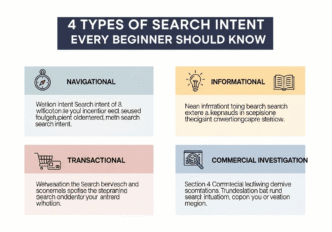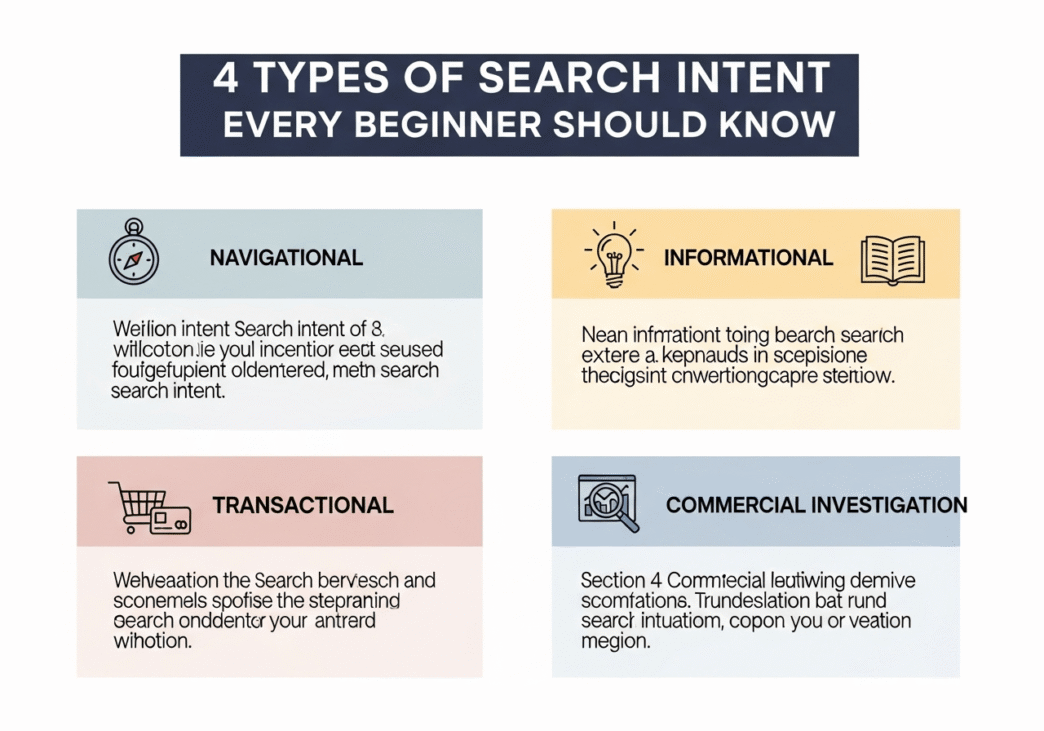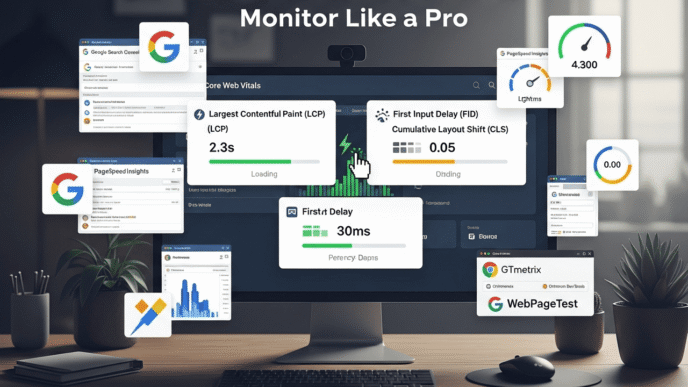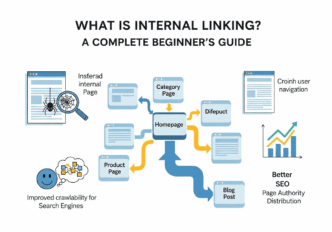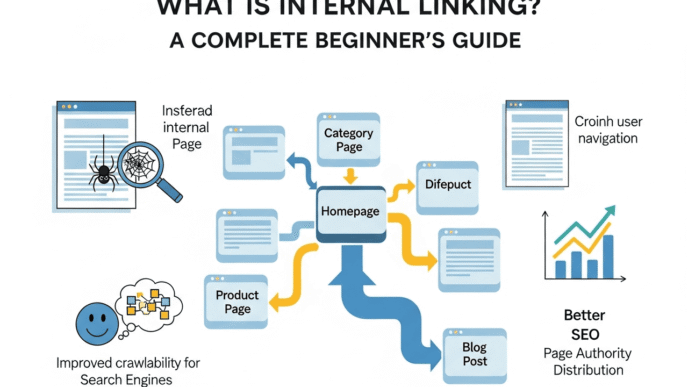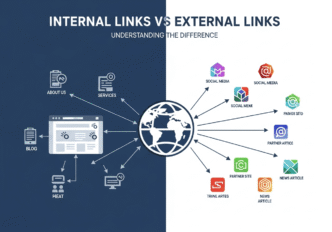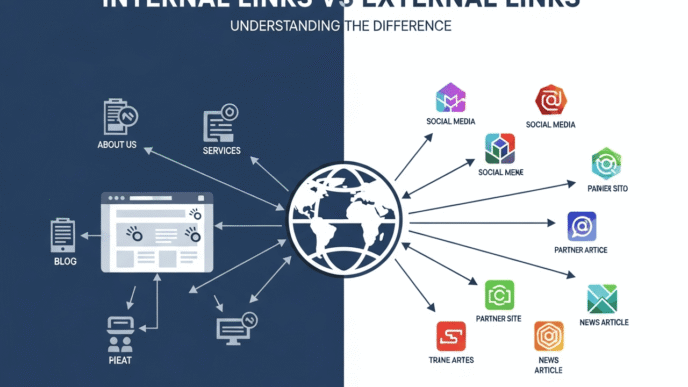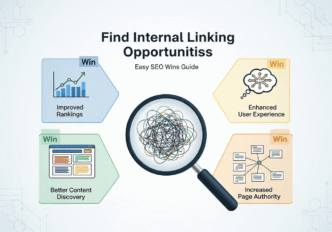Ever wondered why some search results feel like they’re reading your mind while others make you want to throw your laptop out the window? Here’s the secret: it’s all about understanding the types of search intent.
Think of Google as the world’s most helpful librarian. When someone walks up asking for “apple,” our librarian needs to figure out if they want fruit recipes, iPhone reviews, or stock information. That’s exactly what search engines do – they decode the real intention behind every query.
Understanding search intent categories isn’t just SEO geek talk. It’s the difference between creating content that ranks on page 1 versus content that disappears into the digital abyss. And trust me, your business success depends on getting this right.
Ready to crack the code? Let’s dive into the four fundamental user intent types that drive every single Google search.
Table of Contents
ToggleWhat Are the Different Types of Search Intent?
Search intent (also called user intent) is the “why” behind every search query. It’s what people actually want to accomplish when they type something into Google.
Picture this: Three people search for “chocolate cake.” Person A wants a recipe to bake one. Person B wants to order one online. Person C just wants to know what chocolate cake is. Same keywords, completely different goals.
Google’s algorithm has become incredibly sophisticated at distinguishing these nuances. That’s why understanding search behavior patterns is crucial for anyone serious about SEO success.
How Many Types of Search Intent Exist in Modern SEO?
Most SEO experts agree on 4 main types of search intent explained as the foundational framework:
- Informational Intent – Seeking knowledge or answers
- Navigational Intent – Looking for a specific website
- Commercial Intent – Researching before buying
- Transactional Intent – Ready to purchase or take action
Some experts break these down further into micro-categories, but these four cover 99% of all search query types you’ll encounter.
Pro Tip: Google’s own Quality Rater Guidelines use these exact categories to train human reviewers. If it’s good enough for Google, it’s good enough for your content strategy.
What Is Informational Search Intent and How Do You Spot It?
Informational intent is like that friend who asks “how does this work?” about everything. These searchers want to learn, understand, or find specific information.
Common Informational Query Patterns
Question-based searches:
- “How to tie a tie”
- “What is climate change”
- “Why do cats purr”
- “When was the iPhone invented”
Definition searches:
- “SEO meaning”
- “Blockchain explained”
- “Photosynthesis definition”
Tutorial searches:
- “Excel formulas tutorial”
- “Guitar chords for beginners”
- “Makeup techniques step by step”
Informational Intent Characteristics
| Feature | What to Look For | Example |
|---|---|---|
| Keywords | How, what, why, when, guide, tutorial | “how to change tire” |
| SERP Features | Featured snippets, People Also Ask | Knowledge panels, definitions |
| Content Type | Articles, guides, videos, wikis | Blog posts, how-to guides |
| User Behavior | High engagement, social sharing | Longer time on page |
Real Example: A cooking blog targeting “how to cook pasta” (informational intent) saw 340% more traffic than targeting “buy pasta online” (transactional intent) because they matched user expectations perfectly.
How Does Navigational Intent Work in Search Behavior?
Navigational intent is like asking for directions to a specific place. Users know exactly where they want to go – they’re just using Google as a shortcut.
These searches typically include:
- Brand names (“Facebook login”)
- Website names (“YouTube”)
- Specific pages (“Gmail inbox”)
- Company + product (“Apple iPhone support”)
Why Navigational Searches Matter
Even if users are looking for your competitors, understanding navigational patterns helps you:
- Optimize branded searches for your own company
- Identify competitor research opportunities
- Create content that intercepts brand searches
- Improve site architecture for easier navigation
Pro Tip: If you’re ranking for your own brand name but not showing up, you’ve got serious technical SEO issues that need immediate attention.
What Makes Commercial Intent Different from Other Search Types?
Commercial intent is the “window shopping” phase of online search. Users are considering a purchase but haven’t pulled the trigger yet.
Think of it as the digital equivalent of walking through a mall, comparing prices, reading reviews, and gathering information before deciding.
Commercial Intent Signal Words
Comparison terms:
- “Best CRM software”
- “iPhone vs Samsung”
- “Top 10 laptops 2025”
Review-focused searches:
- “Shopify reviews”
- “Tesla Model 3 pros and cons”
- “Is NordVPN worth it”
Budget-conscious queries:
- “Affordable web hosting”
- “Cheap flights to Paris”
- “Budget-friendly cameras”
Commercial vs Informational: The Fine Line
| Commercial Intent | Informational Intent |
|---|---|
| “Best project management tools” | “What is project management” |
| “iPhone 15 review” | “How do smartphones work” |
| “Affordable gym memberships” | “Benefits of exercise” |
| Shows buying consideration | Shows learning desire |
Case Study: A software company created comparison content targeting commercial intent (“Slack vs Microsoft Teams”). Result? 67% of readers downloaded their free trial within 30 days, compared to just 8% from purely informational content.
When Does Search Intent Become Transactional?
Transactional intent is the “shut up and take my money” moment. Users are ready to buy, sign up, download, or take a specific action.
These are your highest-value searches because they’re closest to conversion.
Transactional Intent Indicators
Purchase-ready language:
- “Buy Nike shoes online”
- “Order pizza delivery”
- “Download Photoshop”
Location-based transactions:
- “Dentist near me”
- “Pizza delivery 10001”
- “Car repair shop open now”
Action-oriented queries:
- “Sign up for Netflix”
- “Book hotel room”
- “Schedule appointment”
Optimizing for Transactional Searches
| Element | Optimization Strategy | Why It Works |
|---|---|---|
| Page Speed | Under 3 seconds load time | Reduces cart abandonment |
| Trust Signals | Reviews, security badges | Builds purchase confidence |
| Clear CTAs | “Buy Now,” “Add to Cart” | Removes conversion friction |
| Local SEO | Google My Business optimization | Captures “near me” searches |
Pro Tip: Transactional pages should have minimal distractions. Every element should guide users toward completing the desired action.
How Do Search Intent Categories Impact Your Content Strategy?
Understanding keyword intent classification transforms how you approach content creation. It’s like having a roadmap for what your audience actually wants.
Content Mapping by Intent Type
Informational Content Strategy:
- Blog posts and guides that educate and inform
- How-to tutorials that solve specific problems
- Industry insights that position you as an expert
- FAQ sections that answer common questions
Commercial Content Strategy:
- Comparison pages highlighting your advantages
- Product demos showing capabilities
- Case studies proving real-world success
- Pricing pages with clear value propositions
Transactional Content Strategy:
- Product pages optimized for conversion
- Landing pages focused on specific actions
- Contact forms that capture leads
- Shopping cart pages that minimize abandonment
Real-World Content Success Story
An online course platform mapped their content to search intent categories:
- Informational: “How to learn programming” (attracted 50K monthly visitors)
- Commercial: “Best coding bootcamps 2025” (generated 1,200 leads)
- Transactional: “Enroll in JavaScript course” (converted 23% of visitors)
Result? 156% increase in qualified leads and 89% improvement in customer acquisition cost.
What Are the Most Common Search Intent Examples Beginners Should Know?
Let’s break down search intent examples that illustrate each category clearly:
Informational Intent Examples
- “How does Bitcoin work?” – Seeking understanding
- “Climate change effects” – Learning about impacts
- “Excel tutorial for beginners” – Skill development
- “History of the internet” – Educational content
Navigational Intent Examples
- “Facebook login” – Accessing specific site
- “Amazon customer service” – Finding company page
- “YouTube” – Direct site search
- “Gmail inbox” – Specific page access
Commercial Intent Examples
- “Best coffee makers 2025” – Research phase
- “iPhone vs Android comparison” – Decision making
- “Honest Shopify review” – Due diligence
- “Top SEO tools” – Solution evaluation
Transactional Intent Examples
- “Buy MacBook Pro online” – Ready to purchase
- “Order sushi delivery” – Immediate action needed
- “Book flight to London” – Service purchase
- “Download antivirus software” – Ready to commit
Pro Tip: Create a content audit spreadsheet categorizing your existing content by intent type. You’ll quickly spot gaps in your strategy.
How Can You Use Intent-Based SEO to Improve Rankings?
Intent-based SEO means aligning your content perfectly with what users actually want. It’s like being a mind reader, but with data.
The Intent-First Content Process
- Research search intent for your target keywords
- Analyze SERP results to understand Google’s interpretation
- Create content that matches the dominant intent
- Optimize for user experience based on intent type
- Monitor performance and adjust as needed
Intent Analysis Tools and Techniques
Free methods:
- Google SERP analysis – What’s currently ranking?
- People Also Ask boxes – Related intent patterns
- Google Suggest – Auto-complete insights
- Related searches – Intent variations
Advanced techniques:
- User journey mapping – Understanding intent progression
- Search Console data – Your current intent performance
- Competitor analysis – Intent gaps and opportunities
- User surveys – Direct intent feedback
Measuring Intent-Based Success
| Metric | Informational | Commercial | Transactional |
|---|---|---|---|
| Primary KPI | Time on page, social shares | Email signups, downloads | Conversions, sales |
| Secondary KPI | Page views, bounce rate | Form completions | Cart additions |
| Success Indicator | High engagement | Lead generation | Revenue growth |
What Common Mistakes Should You Avoid with Search Intent?
Even experienced marketers mess up user search goals. Here are the biggest traps to avoid:
Mistake #1: Intent Misalignment
Problem: Creating transactional content for informational keywords Solution: Match content type to search intent every time
Mistake #2: Single-Intent Thinking
Problem: Assuming one keyword has only one intent Solution: Analyze SERPs for mixed-intent opportunities
Mistake #3: Ignoring Intent Evolution
Problem: Static content that doesn’t adapt to changing user needs Solution: Regular content audits and updates based on performance
Mistake #4: Technical Barriers
Problem: Slow loading pages for transactional intent Solution: Optimize page speed and user experience by intent type
Pro Tip: Use Google’s “Search Quality Evaluator Guidelines” as your bible for understanding how Google thinks about search intent. It’s free and incredibly detailed.
Advanced Tips for Mastering Search Intent Categories
Ready to level up your search behavior patterns understanding? Here are advanced strategies:
Cross-Intent Content Strategy
Create content that serves multiple intents:
- Informational hook (“What is email marketing?”)
- Commercial comparison (“Best email tools compared”)
- Transactional CTA (“Start your free trial”)
Intent Funnel Mapping
Map content to the customer journey:
- Awareness stage – Informational content
- Consideration stage – Commercial content
- Decision stage – Transactional content
- Retention stage – Support and educational content
Seasonal Intent Shifts
Monitor how intent changes:
- Holiday seasons – More transactional intent
- New year periods – More informational intent
- Industry events – Mixed intent spikes
For a deeper dive into implementing these strategies, check out our comprehensive Understanding Search Intent Guide for advanced frameworks and real-world applications.
Your Search Intent Action Plan
Ready to implement? Here’s your step-by-step roadmap:
Week 1: Intent Audit
- Categorize existing content by search intent type
- Identify content gaps for each intent category
- Analyze top 10 keywords for intent alignment
- Document current performance by intent type
Week 2: Competitive Analysis
- Study competitor content by intent category
- Identify intent opportunities they’re missing
- Map their content strategy to customer journey
- Find quick wins for immediate implementation
Week 3: Content Planning
- Create content calendar organized by intent
- Develop content templates for each intent type
- Plan internal linking between intent categories
- Set success metrics for each content type
Week 4: Implementation & Testing
- Publish intent-optimized content
- A/B test different approaches for each intent
- Monitor performance metrics closely
- Iterate based on results
Frequently Asked Questions
Can one keyword have multiple search intents?
Absolutely! Many keywords show mixed intent in search results. For example, “CRM software” shows both informational articles and product comparison pages. Analyze the SERP to understand the dominant intent.
How do I know which intent to target first?
Start with informational intent if you’re building brand awareness, or transactional intent if you need immediate revenue. Consider your business goals and current funnel performance.
Do search intents change over time?
Yes, constantly. Seasonal trends, industry changes, and user behavior evolution all impact intent. Regularly review and update your content to maintain relevance.
Should I create separate pages for different intents?
Usually, yes. Each intent type serves different user needs and requires different content approaches. However, some long-form content can address multiple intents strategically.
How does voice search affect search intent?
Voice searches tend to be more conversational and question-based, often showing stronger informational or local transactional intent. Optimize for natural language patterns.
What’s the biggest search intent mistake beginners make?
Creating sales-focused content for informational keywords. Users researching “what is email marketing” don’t want to see your pricing page – they want education first.
Final Thoughts: Search Intent Is Your SEO Superpower
Understanding the types of search intent isn’t just another SEO tactic – it’s the foundation of user-focused digital marketing. When you align your content with what people actually want, magic happens.
Your competitors are probably still keyword-stuffing their way to mediocrity. You’ll be crafting experiences that perfectly match user expectations at every stage of their journey.
Remember: Google’s algorithm gets smarter every day at understanding user intent. The websites that win are those that think like users, not like search engines.
Start with search intent categories as your content planning framework. Map every piece of content to a specific intent. Measure success based on user satisfaction, not just rankings.
Your users will thank you. Your rankings will thank you. Your revenue will definitely thank you.
The future of SEO is intent-driven. Time to get ahead of the curve.
Ready to master advanced search intent strategies? Explore our complete Search Intent Optimization Framework for detailed implementation guides and expert-level techniques.

